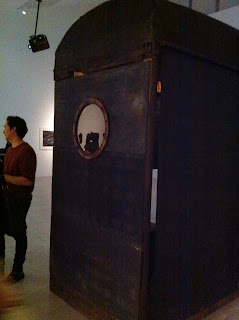SCREEN BASED ART
Screens: Viewing Media Installation Art
Kate Mondloch
2010
This book provides a historical and critical context for the
rise of gallery-based installations made with cinematic and electronic
technologies outlining distinctive features and their relevance in history and
spectatorship – screen-relient spectatorship and how the screen orchestrates
viewing postures, shifts time and space and seperates subjects physically as
they connect.
Screen-based art.
Telepresence and telaction
Projection technology
Society of the screen
Screen as object
Screen space
Viewing bodies
Shifting connections
Screen-reliant, spatial and temporal realms
Interactions between viewers and screens.
Modes of mediation: material, psychic, ideological,
institutional.
Screen objects: creatively disrupt our conventional
relationship to media and imaging technologies.
An awakening of the materiality of the interface.
Communication structured by the screens.
Cinematic receptacle as a site.
Screen spaces
Experiential and site-based artwork
Screen interface is central to the meaning of the artworks.
Moving image environment.
Screen-reliant installations allow contemporary viewers the
opportunity to reconceptualise their relationship with dominant technologies of
visualisation.
Jumbatron: a large-screen television using
technology developed by Sony, typically used in sports stadiums and concert
venues.
Electronic Billboards, cell phones,
laptops, monitors, projections,






